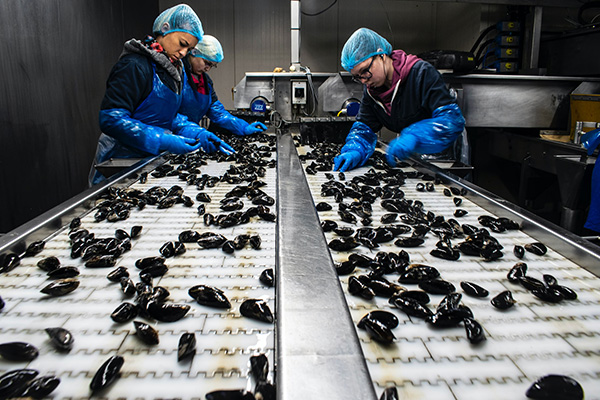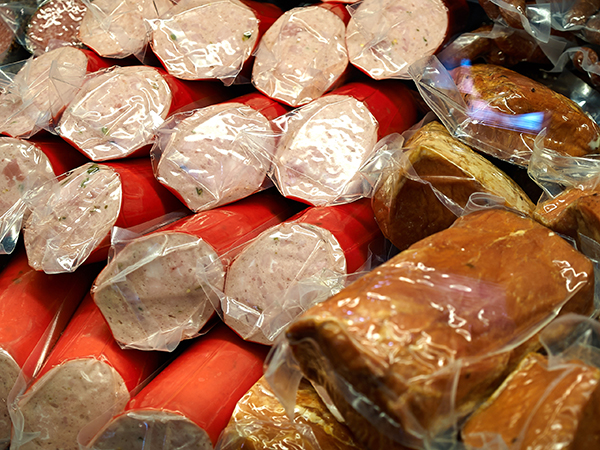In recent years, there have been significant advancements in the field of packaging technology. New materials are changing the way the industry ensures food safety while also addressing environmental concerns surrounding start-of-life and end-of-life sustainability. From using innovative recyclable or compostable materials to ensuring sustainable packaging practices, these developments are reshaping the future of packaging.
Balancing Food Safety with Environmental Responsibility
Industry standards for food safety are vital to safeguard public health, but these standards should also consider environmental impact. Sustainable packaging practices, such as using renewable or recyclable packaging, help to minimize the industry’s carbon footprint and contribute to a healthier planet. Additionally, adopting sustainable packaging can enhance brand perception.
Traditional single-use food packaging materials have a significant impact on the environment. Single-use plastic packaging materials that are petroleum-based, in particular, pose a threat to wildlife and contribute to the large amount of waste ending up in our landfills.
Sustainable Packaging Designs and Materials
The environmental challenges of traditional food packaging materials have led to the development of renewable, recyclable, or compostable packaging options that adhere to strong food safety standards. Materials derived from renewable resources such as plant-based plastics and materials that break down more easily such as paper, are leading the sustainable packaging pack by utilizing renewable resources and reducing the overall impact of packaging waste on the environment. Other sustainable packaging materials include:
Wood pulp paper used to create sustainable takeaway cups, containers, plates, and bowls. As a renewable material, wood pulp paper is a good option for takeaway food packaging, as it is sturdy and lightweight and can be used in its undyed kraft brown form.
Sugarcane (Bagasse) is a renewable resource found in sugarcane after it has been crushed during processing to extract the sugar. Bagasse is a durable material, that is water and oil resistant. It can also be safely microwaved. Bagasse is also compostable under certain conditions.
Bamboo is a fast-growing species of plant that can be harvested without disrupting the root system or killing the plant and does not require any chemical intervention to promote growth, making it a good option for food packaging. Disposable cups made of bamboo are compostable under certain conditions, and bamboo can be lined with bioplastics such as cornstarch (also naturally derived from organic materials) to safely hold liquids.
Birchwood is a light, fine grained product that offers a smooth alternative to plastic disposable cutlery. When sourced from forests that are controlled, these materials have a sustainable start-of-life and are also compostable in certain conditions.
Another creative solution is edible packaging, where the food packaging is safe for consumption and can be consumed after use. This packaging not only reduces single-use waste but also adds a novel touch to the customer experience, providing a simple way for an establishment to stand out.
In addition to sustainability of the products themselves, advances in smart packaging technologies can reduce the amount of food waste entering landfill sites by extending shelf life. These include:
Intelligent packaging that incorporates sensors and indicators to provide real-time information on the condition of the food and alert consumers if the product has been exposed to conditions that lead to spoilage or contamination of the product.
Smart labels featuring NFC (Near Field Communication) or RFID (Radio Frequency Identification) to track the food product from producers to consumers.
Modified Atmosphere Packaging, which can modify the atmosphere inside the food packaging to extend shelf life by adjusting the oxygen and carbon dioxide levels to slow down food deterioration.
Active packaging systems that interact with the food products they contain by using moisture absorbers, oxygen scavengers, and antimicrobial agents to extend shelf life while maintaining freshness and quality.
Businesses that invest in sustainable food packaging materials made from renewable and/or compostable materials not only help reduce the amount of waste directed to our landfills but also help meet the growing customer demand for more sustainable products. Addressing the potential risks associated with inadequate packaging and embracing cutting-edge technologies has shown that the industry can improve food safety and quality, while prioritizing sustainability and contributing to a more promising future.












